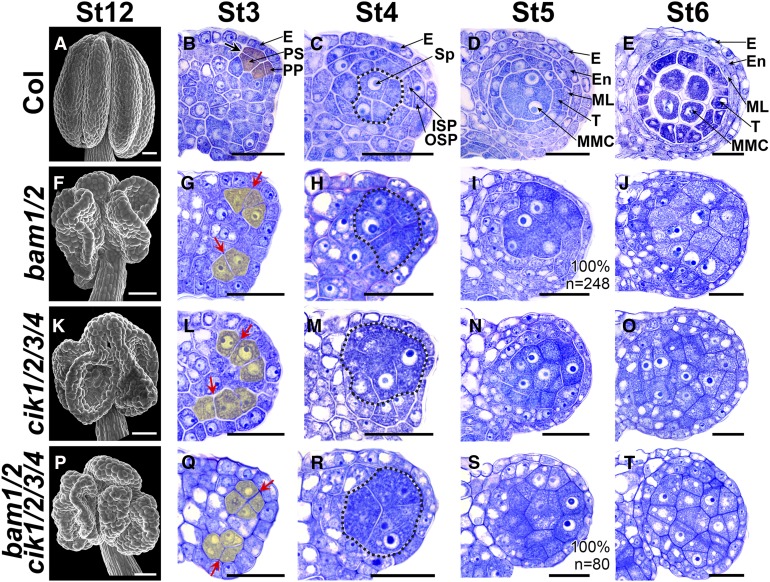Figure 6.
CIKs Genetically Interact with BAM1/2 to Regulate Archesporial Cell Division.
(A) to (E) Wild-type anthers. Scanning electron microscopy image showing a mature anther with four plump lobes at flower stage 12 (St12) (A). Semithin sections showing normal anther development at stage 3 (St3) (B), St4 (C), St5 (D), and St6 (E).
(F) to (J) bam1/2 anthers. Scanning electron microscopy image showing a mature anther with collapsed lobes at flower St12 (F). At St3, the archesporial cell divides anticlinally, and no primary parietal cell and primary sporogenous cell can be properly specified (G). At St4, no outer secondary parietal cell and inner secondary parietal cell are produced (H). MMC-like cells are enclosed only by the epidermis in St5 (I) and St6 (J) anthers.
(K) to (O) cik1/2/3/4 anthers showing defects similar to bam1/2 mutants.
(P) to (T) bam1/2 cik1/2/3/4 anthers showing defects similar to bam1/2 and cik1/2/3/4 mutants.
Thick black arrow indicates normal periclinal division of cells shaded in red (B). Red arrows indicate abnormal anticlinal division of cells shaded in yellow ([G], [L], and [Q]). Sp-like cells are indicated with dotted loops. n indicates the total number of examined locules. E, epidermis; En, endothecium; ISP, inner secondary parietal cell; ML, middle layer; OSP, outer secondary parietal cell; PP, primary parietal cell; PS, primary sporogenous cell; Sp, sporogenous cell; T, tapetum. Bars = 50 µm in (A), (F), (K), and (P) and 20 µm in (B) to (E), (G) to (J), (L) to (O), and (Q) to (T).

